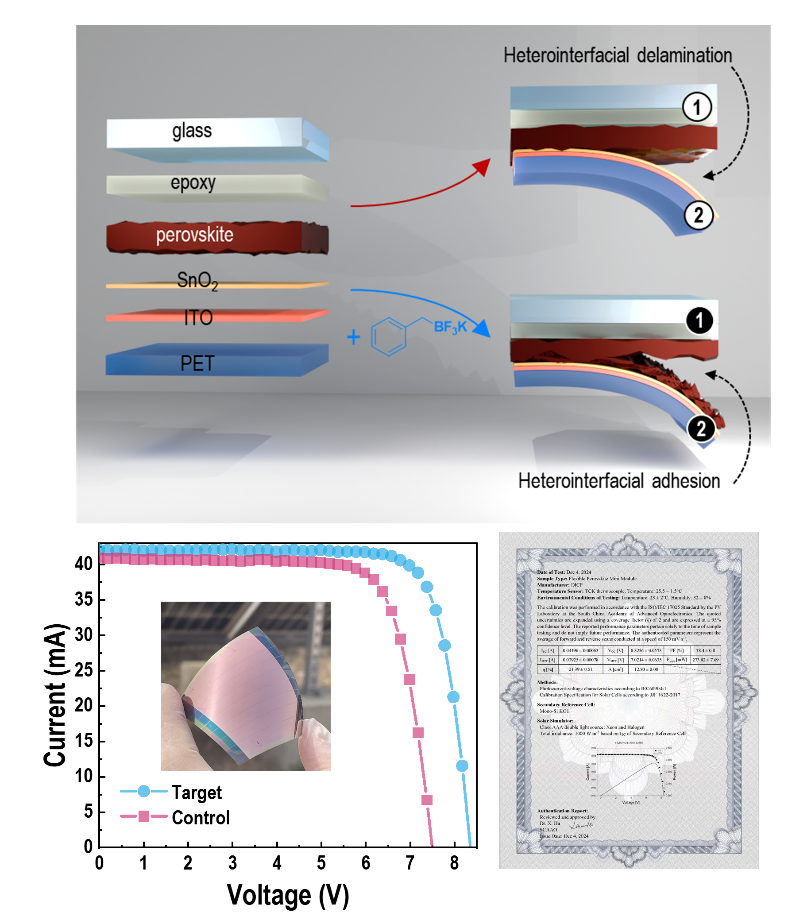Flexible perovskite solar cells (F-PSCs) have attracted attention for their potential in diverse applications. However, their commercialization is hindered by challenges related to low mechanical flexibility, which leads to poor adhesion between the perovskite absorber layer and the flexible substrate.
A recent study published in Advanced Materials offers a promising solution to this problem with the development of a novel bifacial linker designed to prevent heterointerfacial delamination in F-PSCs. This study was conducted by Prof. YANG Dong and Prof. LIU Shengzhong from the Dalian Institute of Chemical Physics (DICP) of the Chinese Academy of Sciences (CAS).

Schematic illustration demonstrating the experimental validation of robust heterointerfacial adhesion between perovskite and SnO2 with the addition of the bifacial linker BnBF3K (Image by YANG Shaoan and ZHU Xuejie)
Researchers introduced a novel bifacial linker, potassium benzyl(trifluoro)borate (BnBF3K), to enhance the adhesion at the SnO2/perovskite interface, which effectively addreses the delamination issue in F-PSCs. By optimizing heterointerfacial delamination, minimizing buried defects in the perovskite, reducing SnO2 surface defects, and improving physical contact between the perovskite and the SnO2-coated substrate, they were able to significantly enhance the performance of the solar cells.
Further analysis confirmed the crucial role of the bifacial linker in boosting device performance. The unique properties of BnBF3K facilitated strong molecular interactions and robust adsorption, ensuring excellent adhesion between the perovskite and the SnO2 substrate. The strengthened mechanical interface provided a stable foundation for electrical contact, allowing efficient charge extraction and transport, even under mechanical deformation of the flexible device.
As a result of the bifacial linker, the researchers achieved an efficiency of 21.82% (certified at 21.39%) for a flexible perovskite solar module with an area of 12.80 cm2. Moreover, the flexible modules demonstrated excellent mechanical flexibility, retaining 96.56% of their initial efficiency after 6,000 bending cycles, highlighting their potential for a wide range of practical applications.
"Our study not only improves the mechanical stability of flexible perovskite devices but also reduces buried surface defects and optimizes energy level alignment," said Prof. LIU.